Frost Protection - UTL Repository
Frost Protection - UTL Repository
Frost Protection - UTL Repository
You also want an ePaper? Increase the reach of your titles
YUMPU automatically turns print PDFs into web optimized ePapers that Google loves.
]<br />
F R O S T P R O T E C T I O N : F U N D A M E N T A L S , P R A C T I C E A N D E C O N O M I C S<br />
[<br />
Liquid-fuel heaters<br />
Liquid-fuel heaters were developed for frost protection during the early 1900s.<br />
Use of the method decreased as oil prices and concerns about air pollution<br />
increased. Although not widely used, the use of liquid-fuel heaters for frost<br />
protection is still a viable method in cases where laws do not prohibit it and<br />
the cost of fuel is not too high. Liquid-fuel heaters require considerable labour<br />
for placement, fuelling and cleaning, in addition to the capital costs for the<br />
heaters and the fuel. Typically, there are about 75 to 100 oil stack heaters or<br />
150 to 175 propane-fuel heaters per hectare, and a well designed and operated<br />
heater system will produce about 1.23 MW ha -1 (i.e. 123 W m -2 ) of power.<br />
The approximate consumption rate is 2.8 litre h -1 per heater for oil- and<br />
kerosene-fuelled heaters and about 1 m 3 h -1 for propane-fuel heaters. More<br />
than half of the energy output from the heaters is lost as radiation to the sky<br />
and convective heat losses on a typical radiation frost night, so the heater<br />
output is high relative to the heat gained by the crop. Note that these<br />
recommendations are for protection of large deciduous orchards that are<br />
surrounded by other orchards that are being protected. Isolated smaller<br />
orchards may require more heaters.<br />
When lighting heaters, every second or third heater in a row should be lit first.<br />
Then go back and light the remaining heaters. This helps to reduce convective<br />
losses of heat through the top of the inversion layer. Oil-fuel heaters should be<br />
cleaned after every 20 to 30 hours of operation, and the heaters should be closed<br />
to prevent entry of rainwater that could cause leakage of oil onto the ground.<br />
The stack can be blown off or the fire extinguished if too much steam is<br />
produced. Remove oil from the heaters at the end of the season. Free-flame-type<br />
heaters will accumulate carbon and lower the fuel efficiency level. Catalytic<br />
sprays can be used to reduce carbon accumulation. They should be refilled<br />
before they run out of fuel and cleaned with a stick or simply hit to free the soot<br />
accumulation that reduces efficiency.<br />
Various types of fuels burners are available for frost protection. A list of<br />
fuels and heaters approved for use in Florida (USA) are given in Tables 7.3 and<br />
7.4. Because they can be improvised with cans of paint, oil, etc., the free flame<br />
type (i.e. without a chimney) is cheaper and easier to transport and fill. They<br />
are smaller, so the density of heaters can be greater, giving better mixing and<br />
less chance for the chimney effect. This sometimes results in improved<br />
protection. However, they are less fuel-efficient because there is more<br />
volatilization and they pollute more. In some locations, they are not approved<br />
for use in frost protection.<br />
152


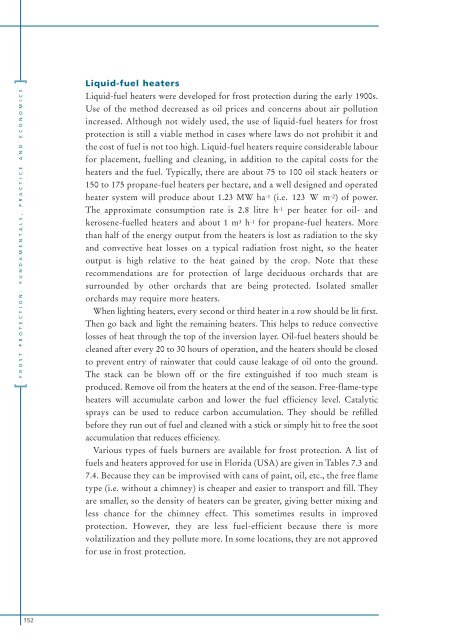
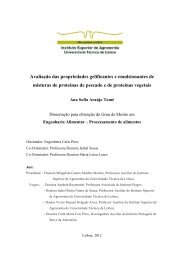
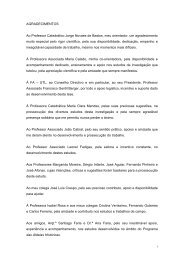

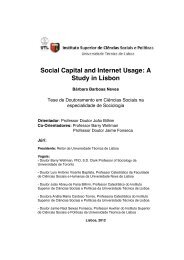
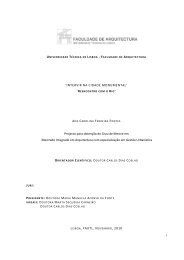
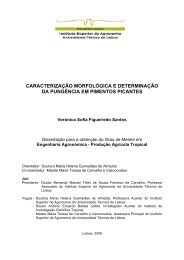

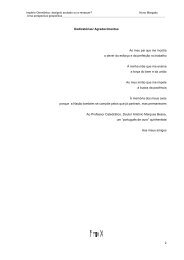

![Tese - Es..[1].pdf - UTL Repository - Universidade Técnica de Lisboa](https://img.yumpu.com/25707135/1/184x260/tese-es1pdf-utl-repository-universidade-taccnica-de-lisboa.jpg?quality=85)


